How do you know we’re living on a warming planet, with serious implications for humanity?
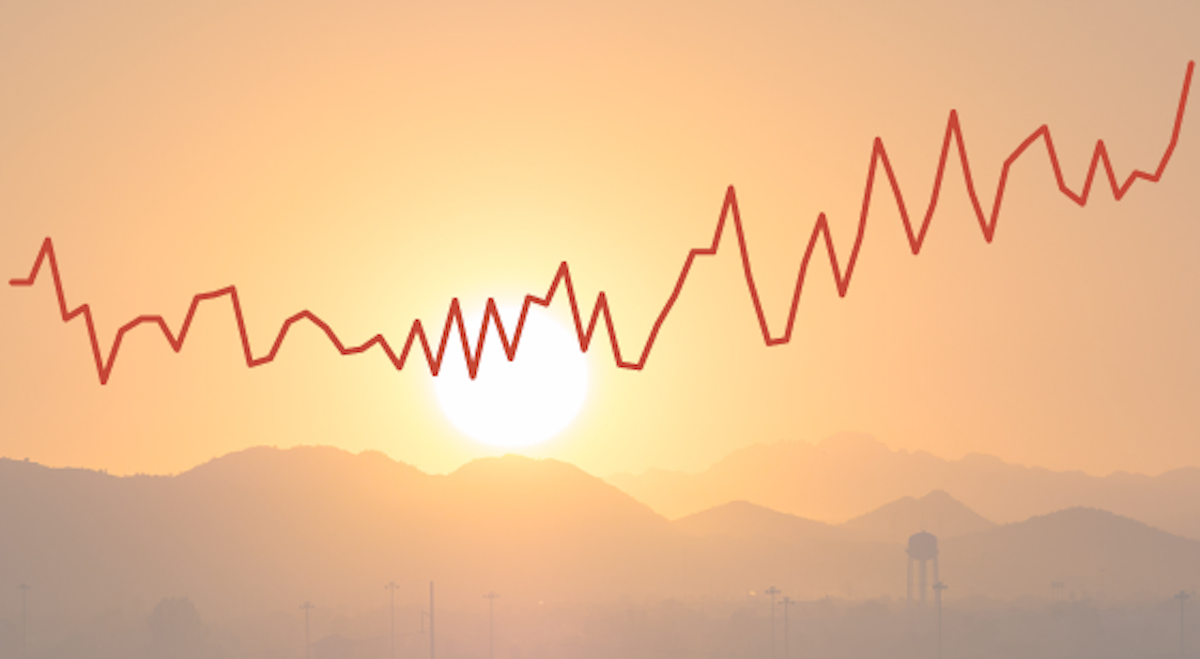
A major new international report lays out the key climate milestones that were surpassed in 2015.
The State of the Climate 2015 report, led by the US National Oceanic and Atmospheric Administration (NOAA), is based on contributions from more than 450 scientists from 62 countries around the world.
It shows patterns, changes, and trends of the global climate system – and the findings are extremely concerning.
Here are 5 warning signs of a warming planet. The alarm bells are well and truly ringing and the impacts of a changing climate are happening now.
1. Greenhouse gases highest on record
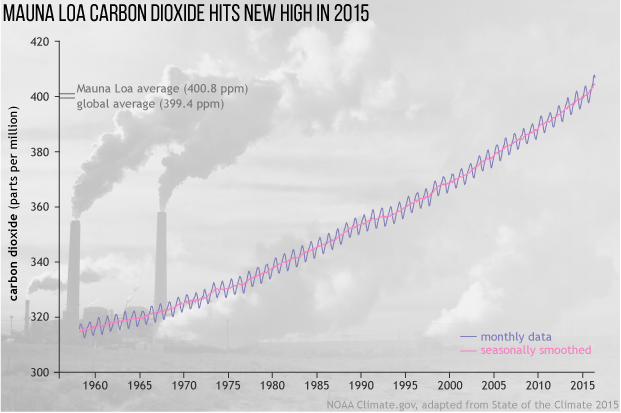
Concentrations of major greenhouse gases, including carbon dioxide (CO2), methane and nitrous oxide, rose to record values in 2015. The concentration of CO2 rose above 400 parts per million at Mauna Loa in Hawaii (location of world’s longest measurements of CO2), marking the largest annual increase in 58 years. The global average CO2 concentration for 2015 was not far below, at 399.4 ppm.
2. Surface temperature highest on record
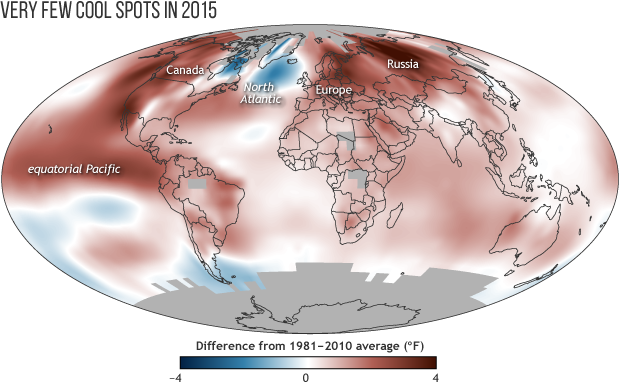
2015 was the hottest year on record globally, with the surface temperature easily surpassing the previous record set in 2014 by more than 0.1°C. This exceeded the pre-industrial average by more than 1°C for the first time. Scary stuff.
3. Sea temperatures highest on record
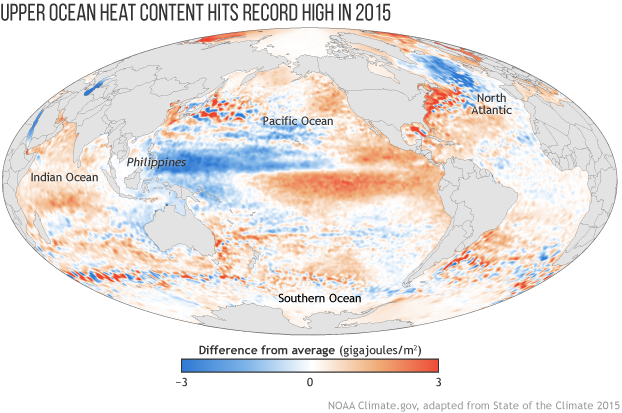
The global average sea surface temperature broke the previous 2014 record. Global upper ocean heat content, the top 300 m of the ocean, was also the highest on record – reflecting the accumulation of thermal energy from the emission of greenhouse gases by human activities, such as the burning of coal, oil and gas. Oceans retain over 90% of the Earth’s excess heat. And over the past year or so, we’ve seen the impacts of the world’s longest global bleaching event that has devastated iconic reefs such as the Great Barrier Reef because of increasing sea temperatures.
4. Sea level highest on record
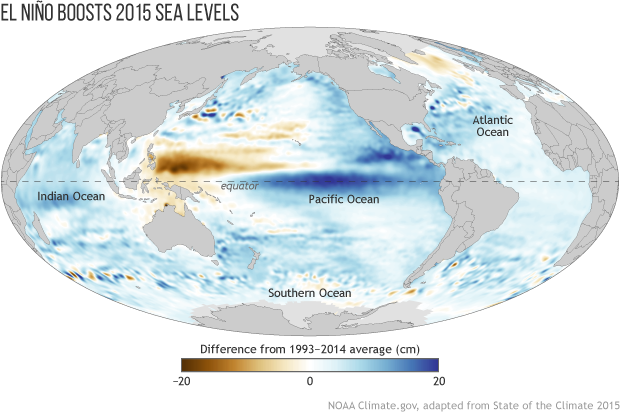
Global average sea level rose to a new record high in 2015, at about 70 mm higher than the 1993 average (when records began). Over the past two decades, sea levels have increased at an average rate of 3.3 mm per year. Rising sea levels can cause more damage to coastal infrastructure as the storms are riding on higher seas (look at the damage cause by the recent East Coast Low in Australia).
5. Extreme precipitation AND drought
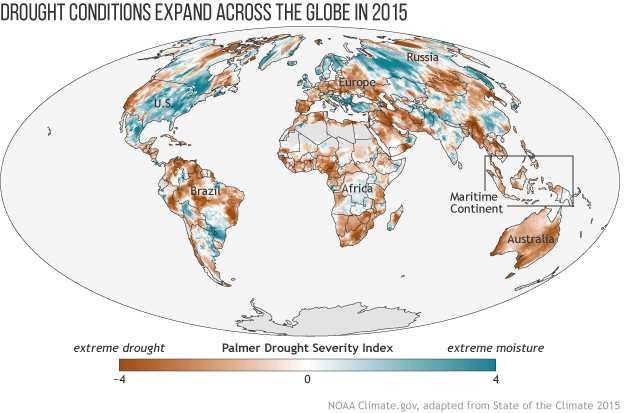
A general increase in the water cycle, combined with the strong El Niño, enhanced precipitation variability around the world. An above-normal rainy season led to major floods in many parts of the world. But globally, areas in “severe” drought rose from 8% to 14% between 2014 and 2015.
The alarm bells are ringing, and the scientific case for urgent action to tackle climate change could not be more clear.
The trend of increasing global emissions must be slowed and halted in the next few years and emissions must be trending downwards by 2020 at the latest. Renewable energy must increase rapidly, and critically, most of the known fossil fuel reserves must remain in the ground. This is the critical decade to get on with the job of responding proactively to climate change.
For all the details on the State of the Climate 2015 report head to the NOAA website.